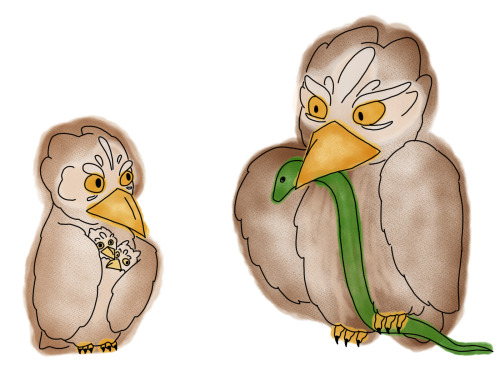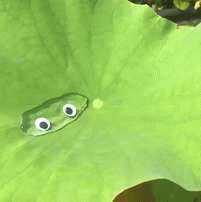The Officinal Glugreng
The officinal Glugreng
My response to this week’s BestiaryPosting challenge from @maniculum

Jinhao shark fountain pen with fine, hooded nib, with Monteverde Raven Noir ink, over initial pencil sketch.
Reasoning below the cut;
"The bird called Glugreng, as Physiologus tells us, is white all over; it has no black parts. Its excrement cures cataract in the eyes. It is to be found in royal residences. If anyone is sick, he will learn from the Glugreng if he is to live or die. If, therefore, a man’s illness is fatal, the Glugreng will turn its head away from the sick man as soon as it sees him, and everyone knows that the man is going to die. But if the man’s sickness is one from which he will recover, the bird looks him in the face and takes the entire illness upon itself; it flies up into the air, towards the sun, burns off the sickness and scatters it, and the sick man is cured."
The white birb that Looks At You (that's a good sign, right?)
We don't have a lot to go on here; it's white, for starters, and royalty like keeping it around. This made me think of falconry, with the (potentially fanciful) strict hierarchy of what rank of nobility can fly which birds. So, a falcon it is!
Bird of prey also makes sense when you consider how similar some of the description is to the actions of the Raggfong (albeit much more selfless that that noble bird...)
Incidentally, when doing the research for reference material for this one (particularly around falconry ranks), I now have a suspicion what this description might be of. At this point it was too late to do a reversal of my concept, and I could very well be barking up the wrong tree, but I'll be interested to find out...!
Because there's no pattern described, I didn't add one, to give it an all white appearance. That does leave it looking a bit sparse.
I had two concepts for this one when I started; the first was this one (Looking At You) which I figured was an interesting way to go, given the behaviour it exhibits, and the second was a picture of it in its natural environment (royal residence, probably with a token regent or two). Time pressure and what I thought would be most amusing resulted in the former.
This was an interesting challenge to see how well I could draw something symetrical. It's okay, I have other strengths, right? ;)
Also, please don't put bird droppings in your eyes... :(
-
 cheapsweets liked this · 11 months ago
cheapsweets liked this · 11 months ago -
 maniculum liked this · 11 months ago
maniculum liked this · 11 months ago -
 hippity-hoppity-brigade liked this · 11 months ago
hippity-hoppity-brigade liked this · 11 months ago -
 sweetlyfez reblogged this · 11 months ago
sweetlyfez reblogged this · 11 months ago -
 wingedtyger liked this · 11 months ago
wingedtyger liked this · 11 months ago -
 silverhart-makes-art liked this · 11 months ago
silverhart-makes-art liked this · 11 months ago -
 coolest-capybara liked this · 11 months ago
coolest-capybara liked this · 11 months ago
More Posts from Cheapsweets
As I was listening through this, I was hoping that muscle mommy Guildeluec ("carrying the varlet") and twinkette Guillardun didn't dump Eliduc (preferably over the side of a boat) and run off together, but that ending was pretty much perfect 🤭

New episode, finishing Marie de France's "Eliduc"!
-----
It's part two of the drama-filled adventure of Eliduc, the two-timing knight! In the final part of this tale, we discuss how medieval writers poke fun at the chivalric system, and explore how to adapt knighthood - in all its forms- into your D&D campaign.
Our KICKSTARTER is coming up! Sign up & try it out yourself here!
Join our discord community!
Check out our Tumblr for even more!
Support us on patreon!
Check out our merch!
The Bestiary Challenge! (<- Don't miss it!)
Socials:
Tumblr
Website
Citations & References:
The Lais of Marie de France
Physical and Mental Cruelty in the "Lais" of Marie de France, Renee L Curtis
Two for the Price of One: Courtly Love and Serial Polygamy in the "Lais" of Marie de France, Sharon Kinoshita
-----
And if you missed the first part, it's here:

For what its worth, I listened to the episode in question, and I just assumed it was another one of those weird things that kept coming up in bestiary descriptions (animals ressurecting each other comes up almost as much as animals hating on snakes... this is all religious stuff, isn't it...).
I was also half convinced that this was going to be a cat (as an aside, if we ever do get a cat entry, I'm going to have to post a picture of my kitty 🐈⬛ ).
I feel like @wingedtyger might have something with their suggestion that ferrets or polecats might be the 'house' hreksong (when I was about 6 years old, my neighbour kept ferrets 😆 ), though humans do like to try keeping pretty much anything as pets, and hreksongs are pretty cute and awesome (as well as being fearsome predators - stoats and weasels often take down prey far larger then them!)
Bestiaryposting Results -- Hreksong
Slightly awkward timing on this one: the animal in question happened to come up on a recent episode of our podcast (We literally quoted a line from the Bodley MS 764 entry, because it was relevant to the story we were reading). So any of the artists who listen may have gotten spoilers. (I say "may", but I've already seen one art post that references the episode.) Sorry about that, artists. Kind of a bizarre coincidence, actually -- it's pretty rare that we happen across bestiary material in a narrative text, and the fact that we did so shortly before the relevant entry came up in the rotation... well, the odds are against it.
Anyway, anyone who doesn't know what this is about should check out https://maniculum.tumblr.com/bestiaryposting. You can also check the "maniculum bestiaryposting" tag to see what beast is the current prompt. The entry for this week's drawings can be found here:
Art below the cut, roughly chronological, as always.

@silverhart-makes-art (link to post here) decided that the best interpretation of the information given was that this was a sort of arboreal mongoose that practiced mouthbrooding. If you want to know what the reasoning was there, you should read the linked post -- it all makes sense there. I absolutely love that the one in the picture is opening its mouth to show the baby riding inside. Silverhart indicates that this is a quicker sketch than usual, but frankly their animal-drawing skills are so good that even a quick sketch is impressive from my perspective.


@cheapsweets (link to post here) did separate drawings for the large outdoor version (upper image, carrying its young) and the small indoor version (lower image, stealing someone's food). The linked post, which explains the design in some detail, indicates that CheapSweets was thinking along similar lines as Silverhart -- i.e., what kind of animal is known for hunting snakes? I like the pose in the first image, and I really like the scene depicted in the second one. On one hand, I'm sure having little creatures live in your roof and steal food literally out of your hands is quite frustrating, but on the other hand, it's very funny. Look at that little guy just brazenly stealing some chicken (or whatever type of bird). The idea of them using their back legs to grip rafters for exactly this purpose is excellent.

@strixcattus (link to post here) decided these could be birds, and has drawn these owl-like creatures for us. They look a bit surly, but that could just be the feather pattern on their faces. As always, I strongly recommend checking out that linked post, as Strixcattus writes brilliant interpretations of these entries in the register of a modern naturalist to accompany the illustrations.

@pomrania (link to post here) has noted that cats live in houses and eat mice, and given us this charming domestic scene. They also note the issues with this interpretation in the linked post, which of course you should read. I think the poses of the cats are very well done here; one of those kittens looks like it wants to paw at the monk's belt but can very much not reach.
And now for the Aberdeen Bestiary:

I'm not sure about the head proportions -- I'd suggest that the flattened snout is because the artist ran out of space, if it weren't for the fact that they were fine letting the back foot extend into the border -- but that is recognizably a weasel.
A few things to note from this:
1. Medieval people apparently had not only mice in their homes, but weasels, which I'd never really thought about. I'm not sure what the distinction they're drawing between the type you find in your home and the type you find in the woods is about, though.
2. The weasel's healing magic crops up in multiple texts, including the Lais of Marie de France and Volsungasaga. It's less common than you might think to find overlap between bestiary-weirdness and narrative-weirdness, so that's pretty notable.
3. I have no friggin' idea why anyone thought they gave birth through their ears. Baffling.


x


